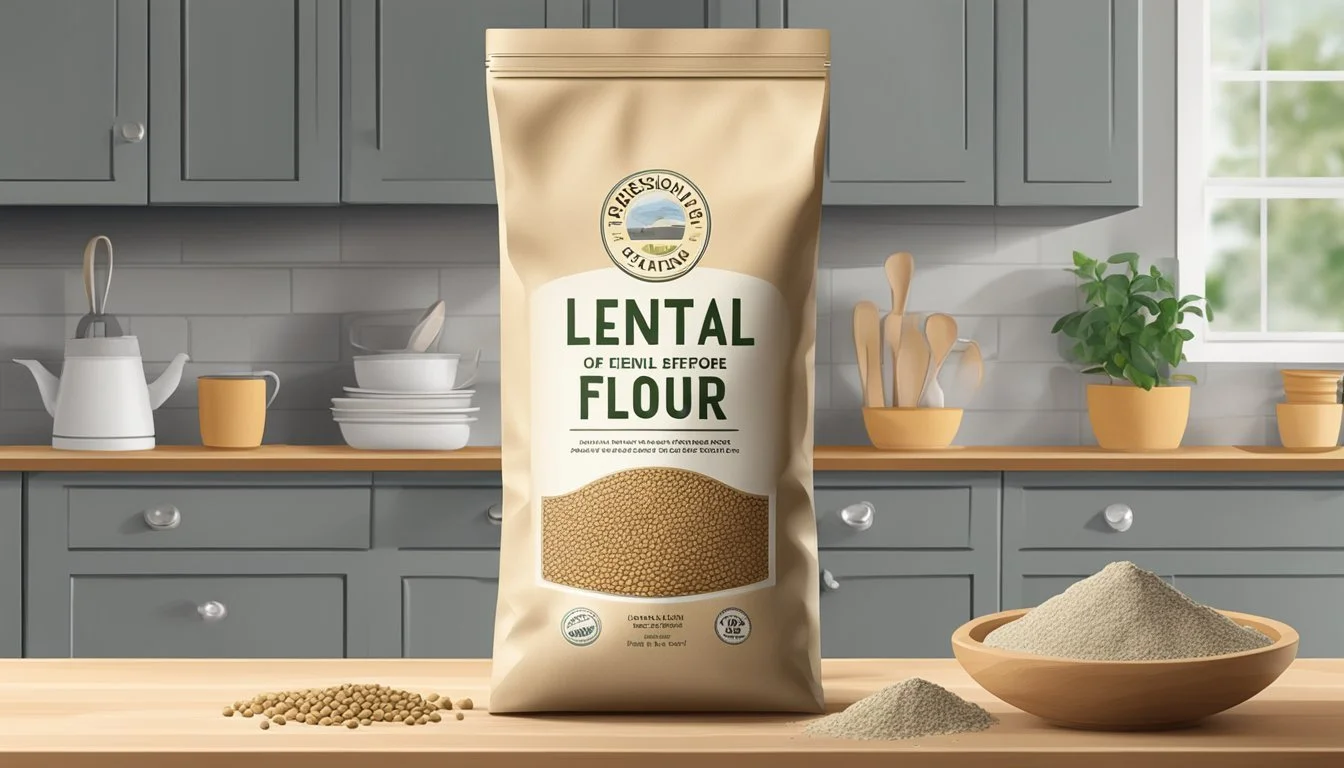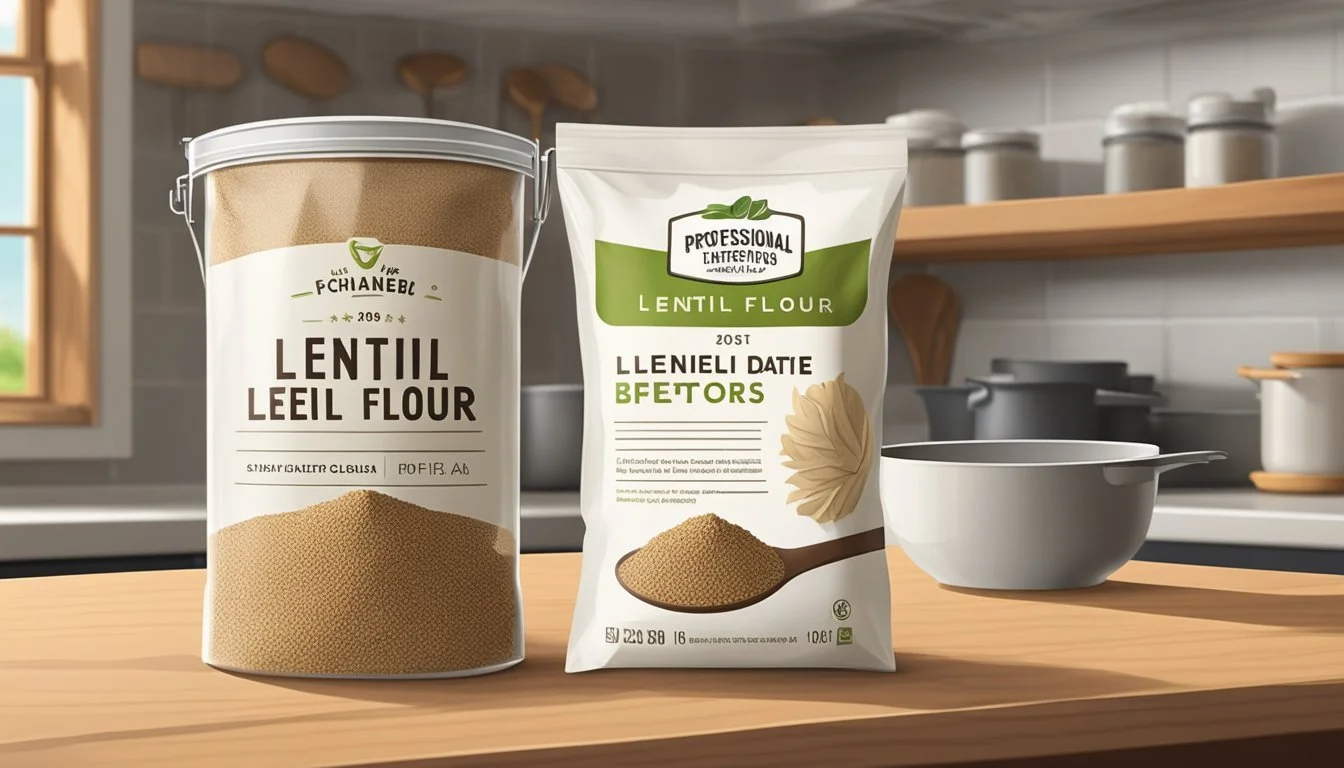Does Lentil Flour Go Bad?
Shelf Life and Storage Tips
Lentil flour, made from finely ground lentils, is known for its dense texture and nutritional benefits. This type of flour can elevate many recipes, but an important question remains: Does lentil flour go bad? Like other flours, lentil flour has a shelf life and can eventually spoil if not stored properly.
Proper storage is key to extending the shelf life of lentil flour. When kept in a cool, dark, and dry place, such as a pantry or cupboard, lentil flour can remain good for several months past its best-by date. Over time, though, exposure to moisture, heat, or light can reduce its quality and lead to spoilage.
It's essential to check for any changes in color, smell, or texture to determine if lentil flour has gone bad. If it has an off smell or shows signs of mold, it's best to discard it. Regularly inspecting the flour and using airtight containers can help maintain its freshness and ensure it remains safe to use in your cooking.
Understanding Lentil Flour
Lentil flour is derived from various types of lentils, known for their robust nutritional profile and versatility in cooking. This flour serves as a gluten-free alternative, rich in protein and fiber.
Nutritional Profile
Lentil flour stands out for its high protein content, particularly beneficial for those on plant-based diets. It offers roughly 25 grams of protein per 100 grams, a significant amount compared to other flours.
Additionally, lentil flour is packed with dietary fiber, promoting digestive health. One serving can provide almost 8 grams of fiber.
This flour is rich in iron and calcium as well as other essential vitamins and minerals like folate, magnesium, and zinc. Given its gluten-free nature, it's suitable for individuals with celiac disease or gluten sensitivity.
Lentil Flour in Cooking
Lentil flour’s dense texture makes it ideal for recipes requiring a firm structure. It's commonly used in baking, adding a nutritious boost to bread, muffins, and pancakes.
In savory dishes, lentil flour can be used to thicken soups and stews or to create batter for fritters and veggie patties. Its versatility doesn't end at traditional dishes; it can also be incorporated into gluten-free pasta and other innovative recipes.
When substituting lentil flour for wheat flour, adjustments may be necessary due to its different absorbency and texture, affecting the final product’s consistency and moisture level.
Storage Fundamentals
Proper storage of lentil flour is essential to maintaining its quality and preventing spoilage. Key factors include keeping it dry, using airtight containers, and handling temperature variations carefully.
Ideal Storage Conditions
Lentil flour should be stored in a cool, dry place. This helps prevent moisture buildup, which can lead to mold or spoilage.
An airtight container ensures that the flour remains uncontaminated by air or pests. Labeling the container with the purchase or expiration date is also advisable to keep track of its freshness.
Avoid storing lentil flour near sources of heat or in bright sunlight, as this can degrade the quality over time.
Storing Cooked Lentils
Cooked lentils should be kept in the refrigerator to maintain their quality. Place them in airtight containers to prevent moisture and odors from other foods from affecting them.
Cooked lentils can typically last for about 5-7 days under proper refrigeration. Using a clean container and utensils when handling helps prevent contamination.
For longer storage, freezing cooked lentils in freezer-safe containers is effective. Ensure that lentils are cooled to room temperature before freezing.
Freezing Lentil Flour
Freezing lentil flour can extend its shelf life significantly. It is best to use an airtight container or freezer-safe bag to prevent freezer burn and moisture entry.
Ensure that the flour is sealed tightly and label the container with the date it was frozen. This helps maintain the quality and freshness of the flour for up to six months.
Avoid repeatedly thawing and refreezing as it can degrade the flour's texture and quality.
Shelf Life and Spoilage Signs
Lentil flour, like many other types of flour, has a shelf life that can vary based on storage conditions. Recognizing when lentil flour has gone bad involves observing visual, textural, and olfactory clues.
Visual and Textural Clues
Lentil flour should maintain a consistent color, typically beige or light brown. Discoloration can be a sign that it is no longer good to use. If the flour appears darker, has specks of mold, or shows signs of insect infestation, it is likely spoiled.
Another important indicator is the texture. Fresh lentil flour should be fine and powdery. If it feels clumpy, sticky, or has a mushy consistency, this could suggest moisture exposure.
Moisture can accelerate spoilage and might cause the flour to develop a musty smell.
Olfactory Indications
The odor of lentil flour is another crucial aspect to monitor. Fresh lentil flour should have a mild, earthy scent. If the flour smells sour, rancid, or musty, it is likely spoiled.
A change in smell often indicates the presence of bacteria or mold, which can make the flour unsafe for consumption.
Proper storage in airtight containers can help preserve the quality and shelf life of lentil flour, keeping it free from moisture and preventing it from going bad prematurely.
Safety and Health Considerations
Proper care and attention are essential when dealing with lentil flour to ensure safety and mitigate health risks. Key considerations include awareness of foodborne illnesses and potential allergens that may be present.
Risks of Consuming Spoiled Lentils
Spoiled lentil flour can pose serious health risks. Signs of spoilage include off-putting odors, discoloration, and the presence of mold or bugs. These can lead to foodborne illnesses if consumed.
Expired lentil flour, especially if improperly stored, may harbor bacteria or fungi. Symptoms of consuming spoiled lentil flour may include stomach cramps, nausea, vomiting, and diarrhea. Therefore, it's crucial to store lentil flour in an airtight container in a cool, dry place to prolong its usability.
Allergies and Dietary Restrictions
Lentil flour is naturally gluten-free, making it an excellent option for those with gluten intolerance or celiac disease. However, individuals must ensure that the flour is certified gluten-free to avoid cross-contamination.
Additionally, while lentil allergies are less common, they can occur. Symptoms may include hives, swelling, and anaphylaxis in severe cases. People with known lentil allergies should avoid lentil flour altogether to prevent adverse reactions. Always check product labels for potential allergen warnings and consult a healthcare provider if in doubt.
Maximizing Lentil Flour Use
Lentil flour is a versatile and nutritious alternative to traditional flours. It can be used in a variety of dishes, offering a high-protein, high-fiber option for those looking to enhance their meals.
Proper Use in Recipes
When incorporating lentil flour into recipes, consider its dense texture compared to wheat flour. It works best in recipes where a dense texture is desired, such as stews, curries, and soups. For baked goods like bread and muffins, combining lentil flour with other types of flour, such as almond flour or all-purpose flour, can improve texture and flavor.
Lentil flour requires proper storage to remain fresh and avoid becoming rancid. Keep it in an airtight container, away from direct sunlight and in a cool, dark place. This helps prevent pests and ensures the flour lasts longer. Using lentil flour with cooked lentils or canned lentils in dishes like salads can enhance the meal's nutritional profile.
Alternative Flours Comparison
Lentil flour stands out among alternative flours for its nutrient density, particularly high protein and fiber content. Compared to all-purpose flour, lentil flour excels in providing essential nutrients like folate and iron. Whereas almond flour and rice flour offer their benefits, lentil flour is particularly beneficial for those needing more dietary fiber.
Unlike all-purpose flour, which can cause blood sugar spikes, lentil flour helps regulate blood sugar levels. It's also durable and stores well, making it a reliable pantry staple. When comparing green lentils and brown lentils to dried lentils in flour form, green and brown varieties tend to hold their shape better, making them suitable for varied culinary applications.






